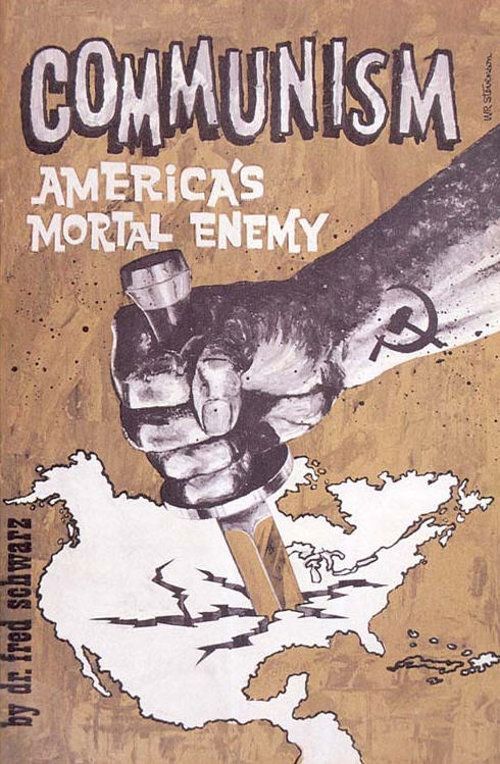Propaganda’s Danger
Photo Credit: Dr. Fred Schwarz
A poster claiming the dangers of Communism for the American population.
December 16, 2019
Propaganda has always been a key part of history. The spread of information, whether spoken or displayed to the public, has always been instrumental in change and growth. As divisive as the most drastic of thinking, propaganda is an instrument of the information war. It is a tool employed by every level of society in every area of the world.
Propaganda allows the spread of disinformation, and halts the promotion of internal evils. It is these qualities that make propaganda dangerous, and why it is so often seen in the modern shining times we find ourselves living in.
There is something significant about information. Information is the key component in nurturing the thoughts of the world’s youth; it’s the leading factor that will shape tomorrow’s world, as well as the edge that splits our pasts. It is as much a weapon as it is a tool. It impacts thoughts and the very values that we, as a thinking species, hold dear. Therefore, why is is so often used poorly?
Propaganda is used in a myriad of powerful ways. But it usually boils down to steering the direction of one’s thinking in one direction or another. It is this danger that leads me to believe that propaganda should be avoided, or at least in some way, discounted.
Forces in power have that power for a reason. Not that they are a good or healthy presence in a community of any size, but they are at least influential, and almost certainly dangerous no matter their alignment between good and evil. Therefore, does it make sense to further that power by believing in a cartoon or a cleverly worded poster?
The prevailing problem here is how the human brain works. Flashing lights, loud noises, and eye catching visuals of any sort are very effective at drawing attention. It’s only natural for propaganda to take the form of or incorporate some of these in order to be more effective. Clashing colors on posters, bright visuals and big words on television screens and the like are all examples of this.
Propaganda was used heavily by the American government in and around the Cold War, particularly at the height of the Korean and Vietnam Wars. These efforts were primarily made to motivate the domestic population to help their counterparts deployed in unfamiliar territory as well as influence the already unpopular opinions of communism that the public held.
Certain posters bashed socialistic ideals and how they clashed with the American Dream, as well as the potency of the “Red Menace” and its supposed effect in the east.
For the most part, these tactics were fairly effective. They raised public approval of the wars on the coastlines of the South China Sea, and sharpened the hate toward socialism. Overall, the wars remained unpopular, but that’s another discussion for another day.
Propaganda has always been effective. Always dangerous and always influential. It’s a tool that’s been used time and time again and has proven itself as harmful as it is productive most every time.



